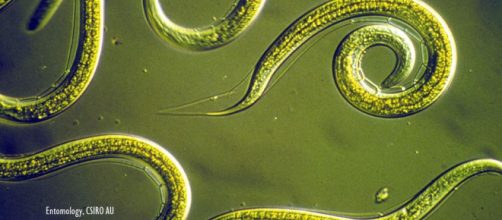Worms were found frozen in the permafrost in northeastern Russia. The Smithsonian reported that the worms, thought to be about 40,000 years old, revived in a petri-dish and started wriggling and feeding. The small worms are known as nematodes or roundworms, and about 40,000 variants exist in our world today. As the Smithsonian noted, if the worms really were that old, they would be the oldest ever revived.
It's feasible that the worms could come to life
A nematologist at Brigham Young University, Byron J. Adams, said to Gizmodo that it is "feasible" to resurrect frozen animals, but as a scientist, he would like to see the actual age of the worms validated.
Noting that cross-contamination could have taken place, such verification is important to establish the veracity of the claim that they are in fact so ancient. Scientists would be delighted to find that they really are so old, as much could be learned about their evolution. They may significantly differ from modern nematodes.
Possibilities from the permafrost relate to cryonics
Live Science noted that the paper on reviving of the frozen worms from the permafrost was published in the journal Doklady Biological Sciences. The report says they "represent the first evidence of multicellular organisms returning to life after a long-term slumber in Arctic permafrost." Previously, an ancient virus that threatened only amoebas was found and a host of other biological treasures are coming to light.
The interesting thing about this field of study are the possibilities in relation to cryonics and reviving life through nanotechnology.
Coining and a recent baby horse in the permafrost
Another interesting side to the perfectly preserved animals of the permafrost is the possibility of cloning new ones, like the mammoths. Recently, Science Alert carried the well-publicized story of a perfectly-preserved baby horse found in the ice. Estimated at only 20-days old at death, when it became trapped, scientists are now thinking about the possibility of cloning it. OuterPlaces reported that the 40,000-year-old horse holds promise for an even bigger ambition - to resurrect the long-lost woolly mammoth.
Is humanity ready to act as custodians of the ancient planet Earth?
For the average human, reviving extinct species is an exciting possibility, especially as in our modern day, species go extinct daily. Worms are fascinating and exciting for scientists, but really, most of us are more interested in the fact they were dead and now they are not dead. We can imagine a Saber-Toothed Tiger, a Quagga, the Dodo or the Tasmanian Tiger inhabiting our planet. Thanks to the movies, we can even envisage dinos running around too. However, the New York Times notes that some scientists believe there may be ethical reasons not to clone extinct species.
Dr. Bennett, of the Carleton University, Ontario thinks about funding.
Animals nearing extinction may be better preserved rather than spending money on long-gone animals. Daily, the rhino, elephant and other endangered animal populations grow closer to extinction through human greed. Perhaps humanity is not yet mature enough to act as custodians of the ancient animals of planet Earth.

